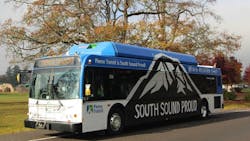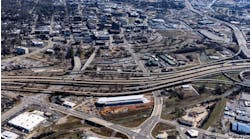Pierce Transit is holding a board of commissioners’ study session and public hearing Oct. 14 to discuss the agency’s proposed 2020 budget, which includes several operating and capital projects, as well as day-to-day activities that continue the agency’s focus on providing safe, reliable and innovative transportation options.
The agency’s draft budget was built on several key 2020 goals and priorities, including:
· Customer Experience: Pierce Transit will focus on projects that improve customers’ transit experience, such as the planned Bus Rapid Transit project between Tacoma and Spanaway; provide more local businesses with ORCA business accounts to help their employees travel around the region; and repairs and improvements to select transit centers and the agency’s Commerce Street hub in downtown Tacoma.
· Continued Accountability: The agency will implement new processes and programs to improve financial accountability and reduce risk of loss.
· Planning for the Future: Among other projects, the budget includes funding to begin updating the agency’s 30-year-old base and lay the groundwork for safe and efficient operations for the next 30 years as services grow and evolve. The agency will also focus on providing new and innovative customer service and mobility options, such as an on-demand service in areas with less-than-robust transit options.
Pierce Transit’s annual budget planning process examines its programs, service and financial operations, along with various economic forecasts, to develop an overall financial outlook and form a solid spending plan. By law, Public Transportation Benefit Areas such as Pierce Transit may collect up to .9 percent sales tax within its service area to fund services. Pierce Transit currently collects two thirds of the allowable rate – 0.6 percent sales tax – which provides most funding for Pierce Transit’s local services. With sales tax revenues expected to increase about five percent next year, the agency is planning a modest 3.9 percent budget increase over 2019. The level of fixed route bus service is planned to remain steady at approximately 500,000 service hours.
Pierce Transit’s operating budget is built on $171 million in expected revenues, including $57.2 million from the contracted regional express bus service Pierce Transit provides for Sound Transit. Planned operating expenditures total $157.5 million. The operating budget includes 971 Full Time Equivalent positions (FTEs), a net reduction of two FTEs from 2019. Of those positions, 872 – or 88 percent – are directly related to service on the street in the form of transit operators, maintenance workers, customer service agents, public safety officers, service support employees who provide support across the network wherever it’s needed and other hands-on positions. The remaining 12 percent of staff are administrative employees that handle back-office operations, such as human resources, route planning and other administrative functions. Outside of wages and benefits, which comprise almost 70 percent of operating expenses, planned expenditures include some of the key projects mentioned above, as well as items such as supplies and services.
Pierce Transit’s capital projects for 2020 are budgeted at $133 million, including $109 million in approved but unspent projects carried over from 2019 and $23.4 million in new projects. Wherever possible, capital projects are funded from grants and other non-local sources. In 2020, about 46 percent of capital spending is expected to come from grants and other outside capital sources, with the remaining 54 percent from agency funds.
The capital budget includes expenditures for the replacement of aging buses, vans and SHUTTLE paratransit vehicles; work on the agency’s 30-year-old base to support efficient agency operations and set the stage for future growth; passenger facilities and amenities, including a new Spanaway bus turnaround/Park & Ride and work on select transit centers; technology infrastructure and software to include safety and security systems and replacement of the agency’s obsolete dispatch/vehicle locator system; and other projects related to speed and reliability of service.
Pierce Transit’s Six-Year Financial Plan is sustainable for operations, and reserves comply with required levels established by Pierce Transit’s Board of Commissioners, giving the agency the ability to deal with adverse economic conditions, emergencies and exposure to casualty and legal risks. Pierce Transit carries no long-term debt.



